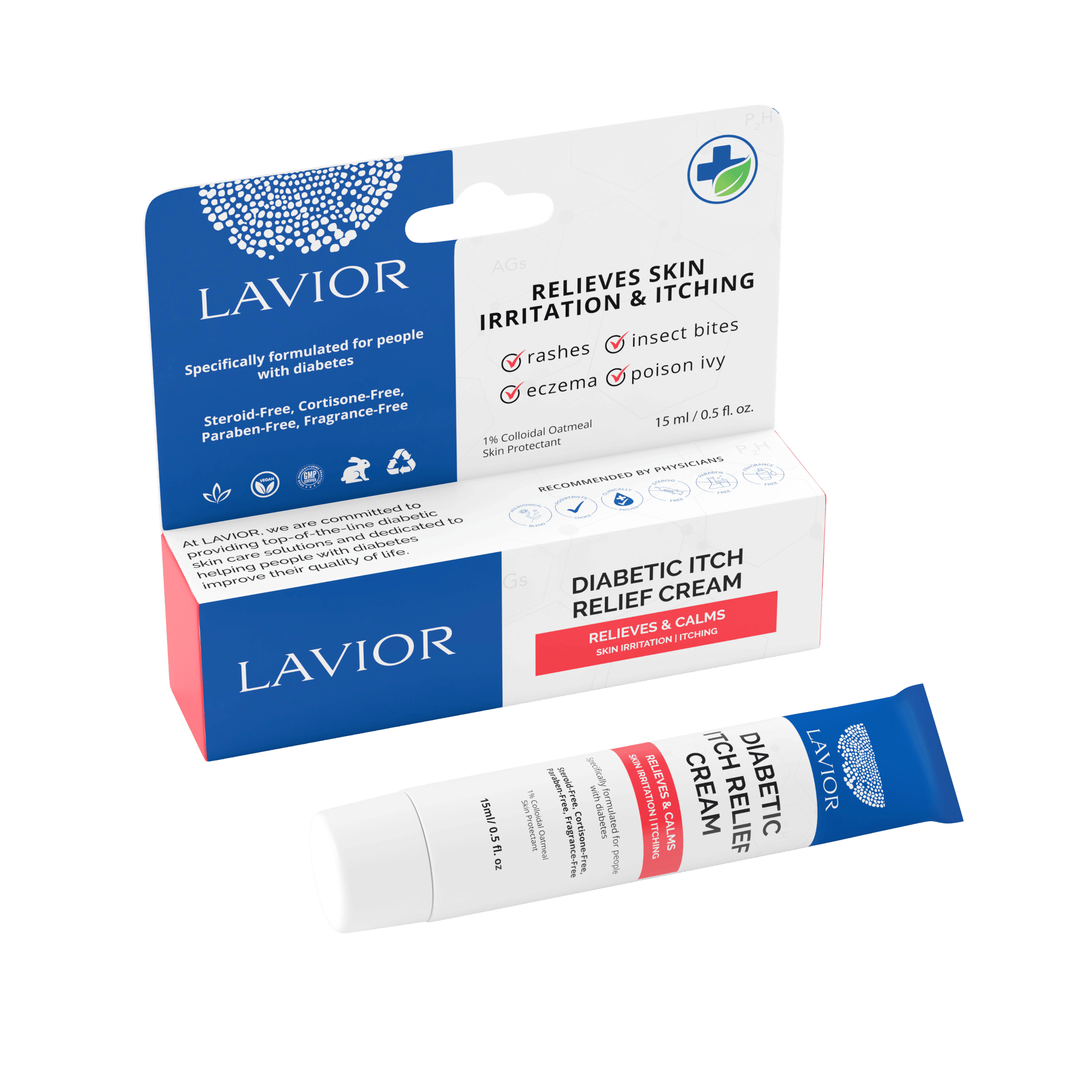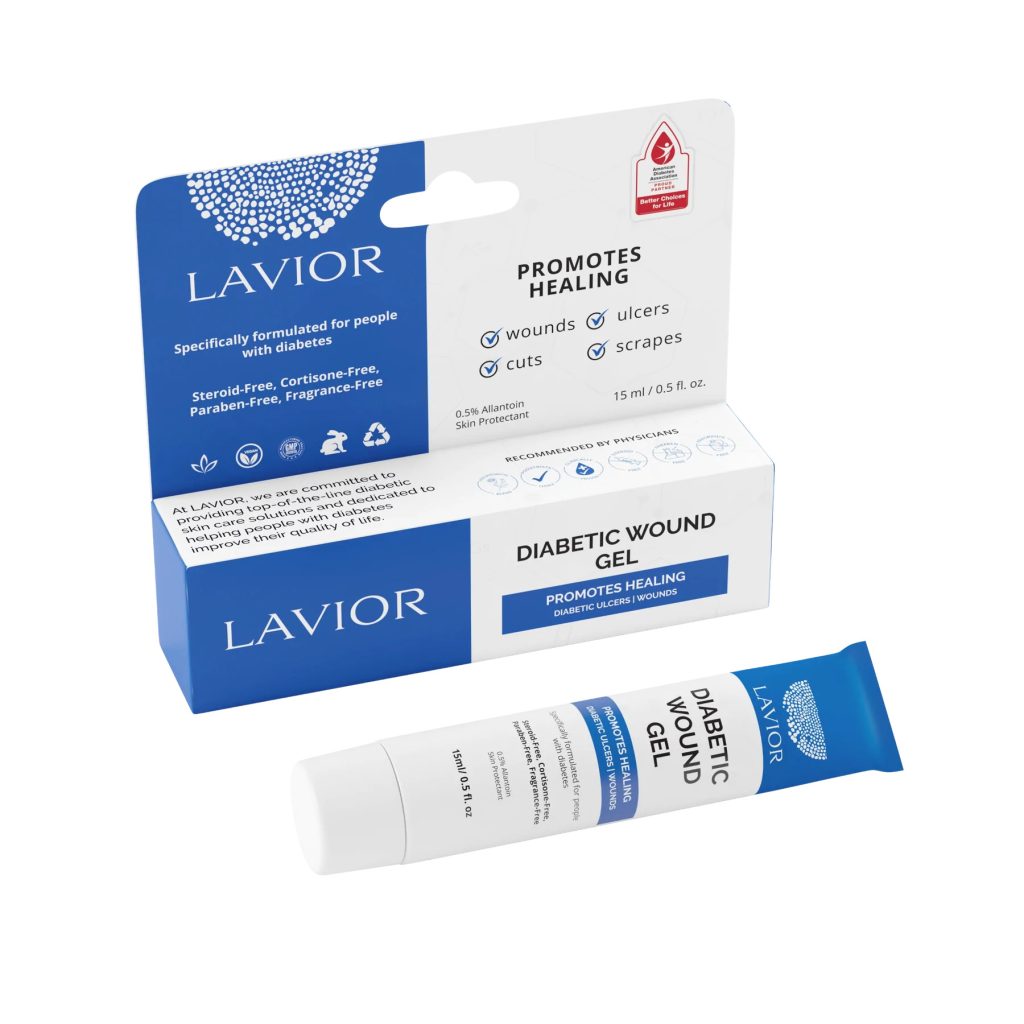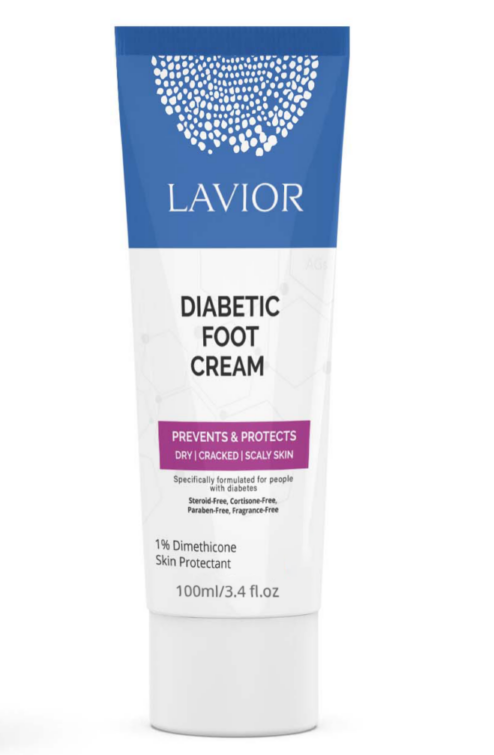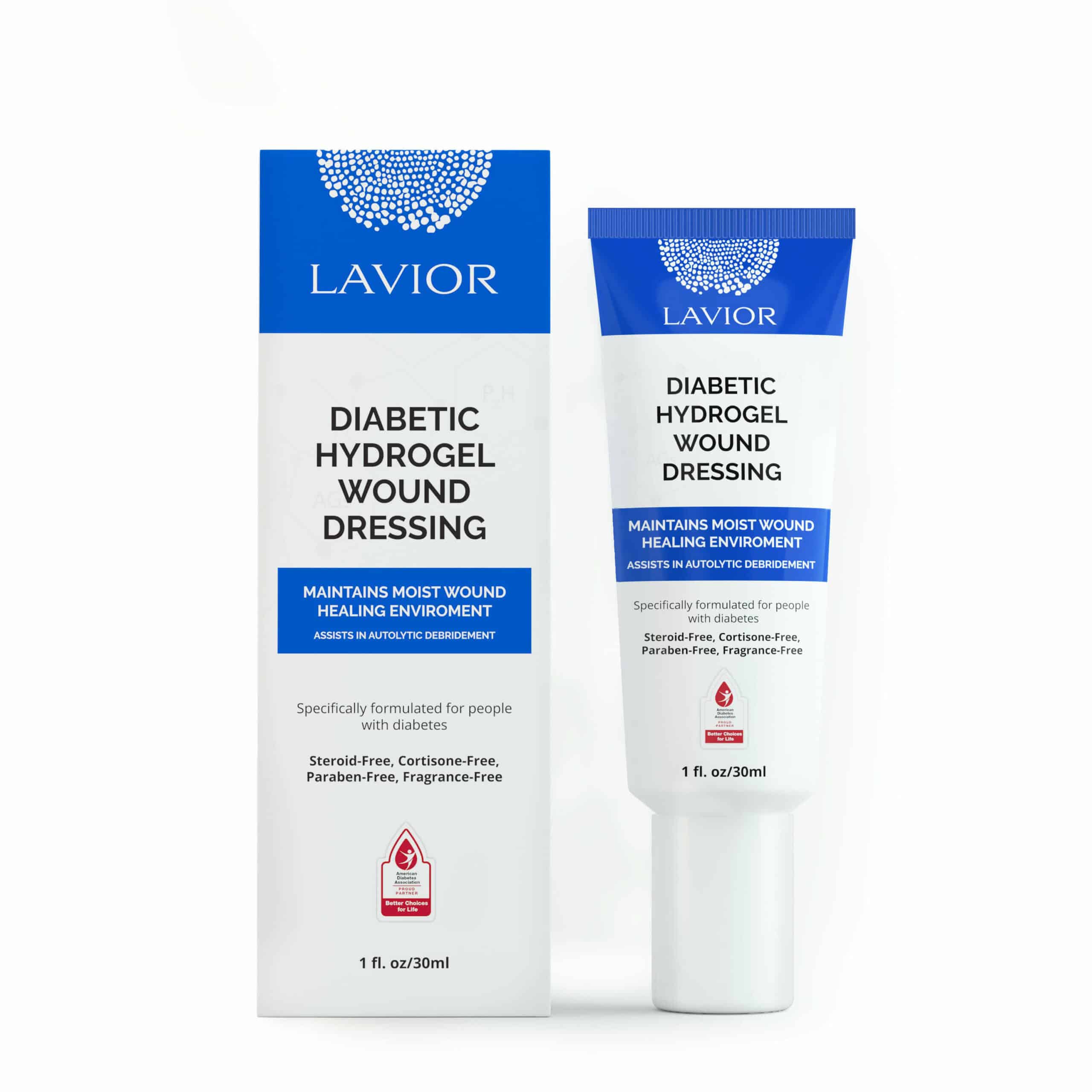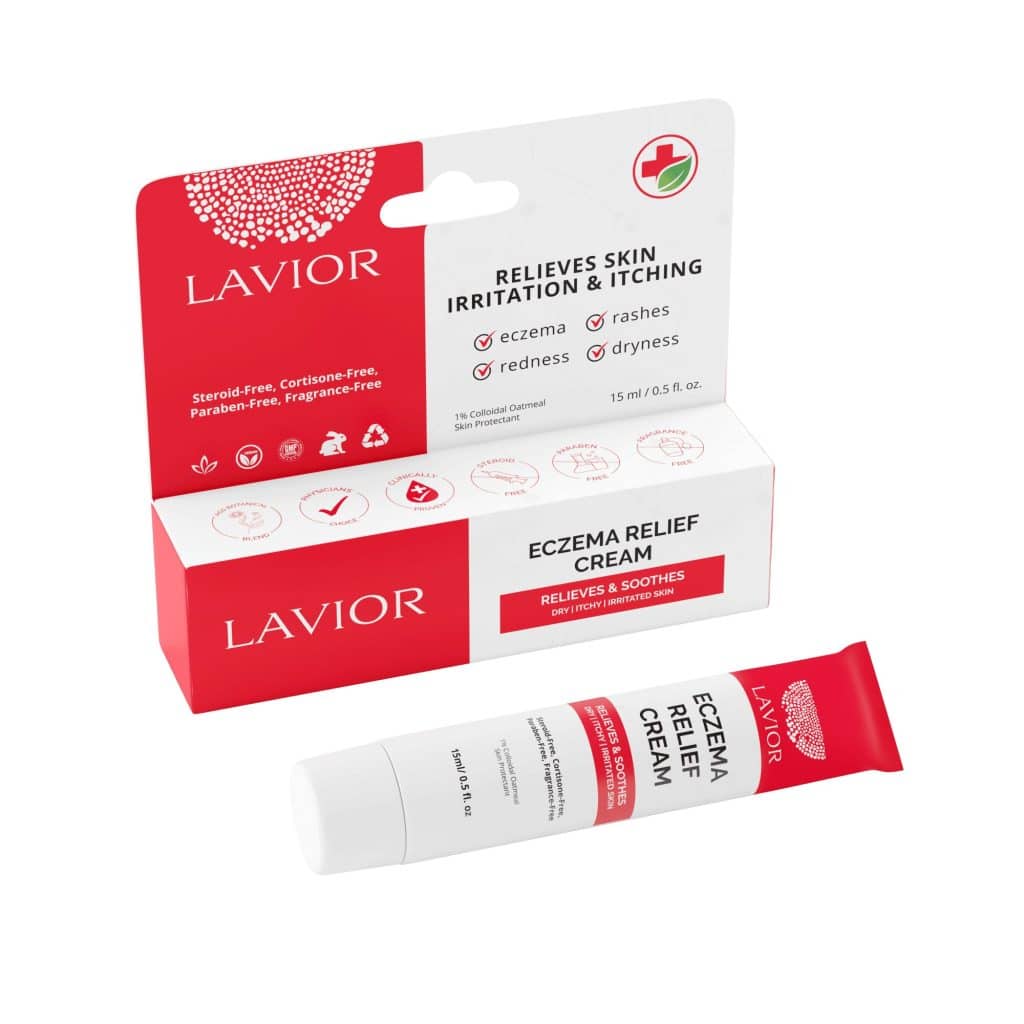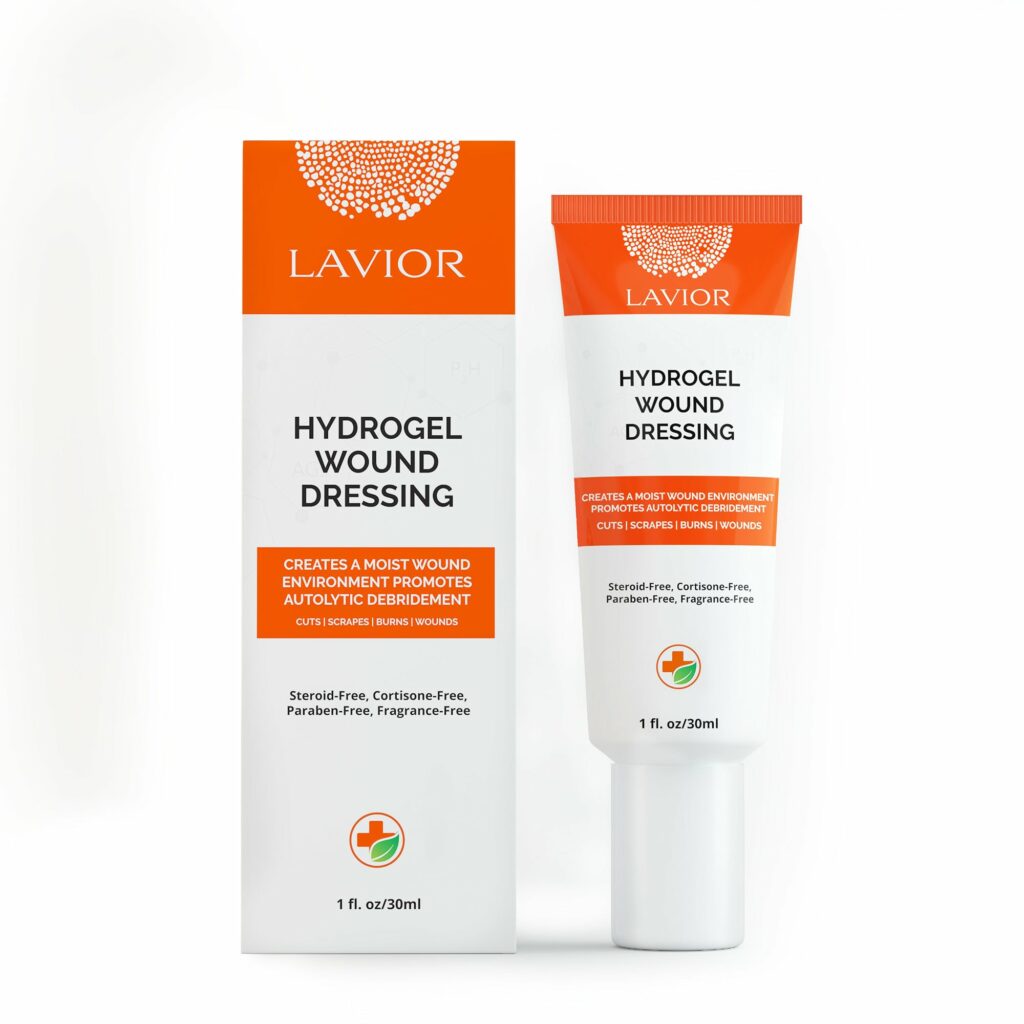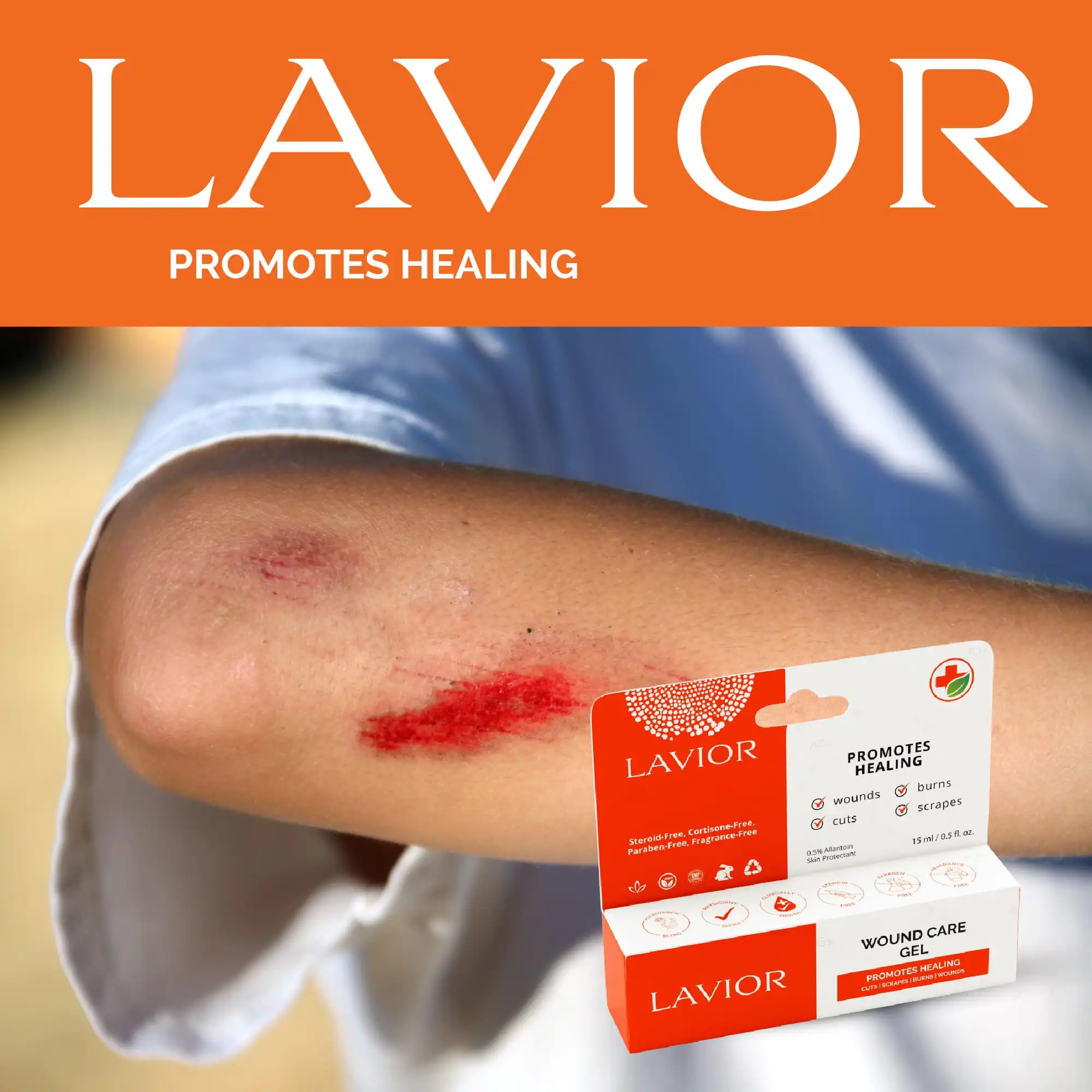Chronic wounds pose a significant challenge, impacting 1%-2% of individuals in developed nations. In the United States, nearly 6.5 million people contend with at least one chronic wound during their lifetime.
The effective treatment of wounds is paramount for preserving your physical and psychological well-being. It can also preserve your overall quality of life.
A wide array of therapeutic options exists. However, many of these therapies are invasive, expensive, and require highly competent medical staff.
Fortunately, another viable solution has emerged that is less invasive, much more cost-averse, and equally effective: Lavior’s Wound Dressing HydroGel.
Our dressings emerge as a particularly promising option due to their versatile functional attributes, which encompass biodegradability, adhesiveness, and antimicrobial properties, as well as offer accelerated healing potential for chronic wounds.
Here you are going to learn more about our gels and why they are so effective in treating diabetes-related wounds.
What Are Wound Care Gels?
A wound care gel is a product that is generally crafted from polymers that have an affinity to water, with most of them having a content of approximately 90% of it.
These dressings—aptly named for their water-based composition—excel in maintaining wound hydration, facilitating eschar—dead tissue forming over healthy skin—rehydration, and assisting damaged tissue breakdown by natural means, also known as the autolytic debridement processes. Yet, they still also preserve granulation and adjacent epithelial tissue.
These gels are usually available in diverse formats such as sheets, amorphous gels, or as components within composite dressings. They foster a moist environment that is conducive to cellular migration and absorption of any type of exudate material.
Wound care gels are suitable for wounds spanning from dry to mildly exudating, and effectively manage slough deposition on wound surfaces.
For all their inherent features, Lavior hydrogel dressings emerge as a versatile and indispensable asset in modern wound management practices you can employ both in domestic and professional environments.
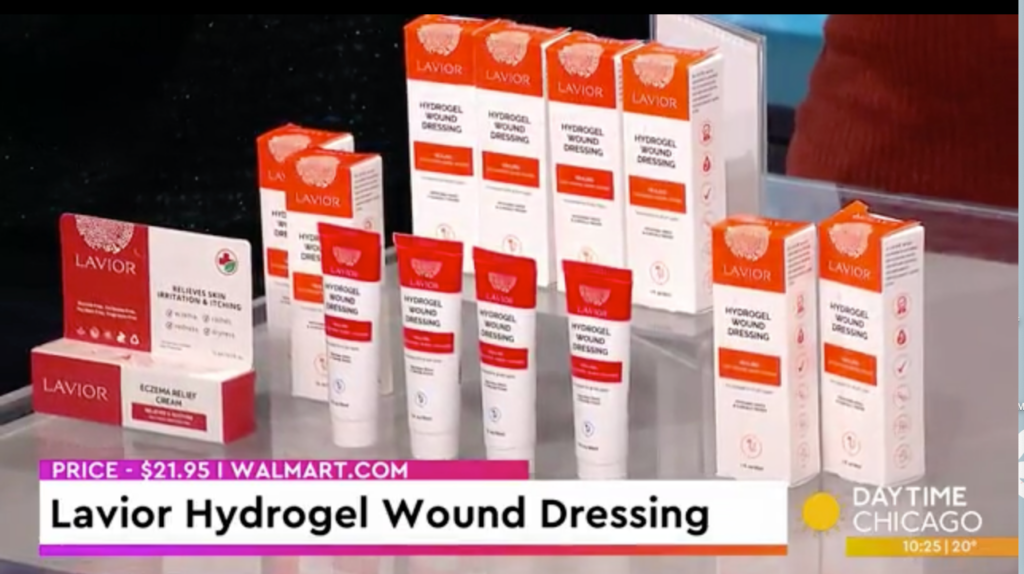
Different Types of Wound Care Gels
Hydrogels most of the time come in two main forms: sheets and gels.
Hydrogel sheets consist of polymer-made sheets that can absorb water, maintaining optimal moisture levels for wounds with light exudation.
A semi-permeable film layer supports them, with adhesive borders available but not always necessary. The backing controls evaporation, preventing overdrying of the wound.
You can customize sheets, allowing for cutting to size and shape, and can serve you as both primary and secondary dressings.
The main disadvantage that comes with these products is that if you are diabetic, your skin is bound to be sensitive and prone to breaks. This can hurt it even more if you employ adhesive borders on its surface, proving not to be the best option provided your skin is severely wounded.
On the other hand, hydrogels are mostly able to flow freely, reaching every part of the wound regardless of its depth. They sometimes require securing with gauze and changes, but mostly in severe cases. As primary dressings, they ensure wound coverage and moisture retention.
Impregnated hydrogels involve dispersing gel into gauze or sponge strips for application over wounds, often requiring a secondary dressing to secure them in place. They are suitable for packing deep wounds.
What to Look for in Wound Care Gels
When choosing a hydrogel, you should consider its composition, as this impacts its functionality. Look for products that contain mostly water and natural components that aid recovery without any side effects.
Lavior products are thoroughly clinically proven, ensuring the gel’s ability to maintain moisture balance in wounds while supporting tissue repair. Our hydrogels have proven biocompatibility and non-cytotoxicity, which ensure safe and effective wound management.
You ought to opt for hydrogels with semi-permeable backings to regulate moisture evaporation, promoting an optimal healing environment, and with antimicrobial properties to prevent infections.
Scientifically speaking, hydrogels with these attributes have demonstrated efficacy in wound healing, providing moisture, promoting cell migration, and reducing any form of bacterial colonization.
Advantages of Using Wound Care Gels
Hydrogel dressings bestow you numerous benefits for wound care. They help you maintain a clean environment by facilitating the removal of infected or necrotic tissue through autolysis, making them particularly suitable when you possess dry, sloughing, or necrotic wounds.
Our hydrogel dressings keep your wounds warm, moist, and snug without causing irritation or reaction with tissue. Lavior’s non-adherent nature of products permits metabolite passage, ensuring optimal wound healing conditions for your body. Additionally, they give you a soothing cooling effect, enhancing your comfort.
Furthermore, our hydrogels support wound re-epithelialization —or skin regeneration—by mimicking skin structure and promoting the growth of skin components.
Lavior creations are suitable for various wound types and stages, such as painful wounds, partial, full-thickness wounds, and dry wounds alike.
Furthermore, Lavior’s thin composition renders it beneficial in addressing other conditions distinct to diabetes, like chickenpox, shingles and burns of diverse nature. So, if you find yourself enduring any of these conditions, you shall get double the benefits.
When to Use These Gels
There are varied scenarios in which you can use Lavior products to heal your skin. Some of them encompass the following:
- Dry wounds: Our hydrogel dressing maintains moisture balance, promoting a conducive environment for healing
- Sloughing wounds: It aids in the removal of infected or necrotic tissue through autolysis, facilitating wound cleansing
- Painful wounds: It offers a soothing cooling effect that goes soft on your skin
- Wounds of varying thicknesses: The Lavior Wound Dressing HydroGel grants reepithelialization, encouraging healthy skin growth
- Burns: Its cooling properties make it effective for managing minor burn injuries. Even if it is a second-degree burn, we have you covered
- Non-diabetes conditions like chickenpox, shingles, and post-surgery wounds: Its virtues extend well over diabetes-induced wounds, making it suitable for unrelated conditions of these characteristics
Introducing the Lavior Hydrogel Wound Dressing
The Lavior Wound Dressing HydroGel presents a comprehensive solution for swift healing. This scientifically validated wound care gel addresses various concerns, ranging from minor cuts to second-degree burns, delivering noticeable results in a short span of time.
With all the virtues and requirements you would need from a hydrogel, this game-changing product by Lavior is your go-to solution for wounds, proven to be useful for surgeons, dermatologists and everyone alike.



